Is the Japan Rail Pass Worth It in 2024?
"Is a Japan Rail Pass worth it?"
This might be the most important question you are asking yourself right now as you prepare for your trip to Japan in 2024.
In this post, I'm going to show you whether a Japan Rail Pass is worth buying. Using the itinerary from my first trip to Japan and current prices, I'll compare how much my 3-week trip to Japan costs with a JR Pass and how much it would cost without a pass.
Unfortunately, the price of JR Passes increased by 70% in October 2023. But individual train tickets did not go up.
In this post, you'll also learn how to buy and activate the pass and how to use the pass once you get to Japan.
So let's get started!
Disclosure: This post may contain affiliate links. As an Amazon Associate and a Bookshop.org Associate, I earn from qualifying purchases. Please see this website's Disclosure for more info.
Is the Japan Rail Pass Worth It?
Is a Japan Rail Pass worth it?
The best answer I can give you is this: It depends on your route.
I know you want to hear a clearer answer than that. But let me explain and then I think you'll understand why I can't give you a straightforward answer.
Here are examples from 2 of my trips to Japan:
- First Trip to Japan: I bought a 14-Day Japan Rail Pass in Ordinary Class. I was there for almost 3 weeks (19 days), and I traveled all over Japan. You can check out my Japan Itinerary here. I saved money buying the pass rather than individual tickets.
- Second Trip to Japan: I didn't buy a JR pass. My trip included Tokyo and 4 cities around it: Nikko, Hakone, Kamakura, and Kawaguchi-ko, and I bought individual tickets and a regional pass. A JR Pass wouldn't have been worth it because I rarely took JR Trains.
To see if a Japan Rail Pass is worth it for your own trip, you'll need to compare the cost of a Japan Rail Pass with how much it costs to buy individual tickets.
Current Prices for the JR Pass
These are the current prices (2024) per the official Japan Rail Pass website.
The online travel agency, Klook, sometimes has better prices. I bought my pass from Japan Experience and had a good experience with them.
Comparing JR Pass with Individual Ticket Prices
I was in Japan for 19 days, but I bought the 14-day pass because my first 4 days and my last day were in Tokyo. It was cheaper NOT to use my Japan Rail pass while I was in Tokyo.
Now let’s look at how much it would have cost me if I hadn’t bought the pass. These are the average price per ticket as of January 2024.
A 14-day pass would cost me ¥80,000 (US$565 | £448 | €516) if I bought it from Klook (shipping fee is included in the price) in 2024. The exchange rate is as of January 2, 2024.
However, each ticket on a JR train would cost me ¥71,940 (US$507 | £402 | €463).
The JR Pass is more expensive by ¥8,060 ($57 | £52 | €45).
So for this 3-week Japan itinerary in 2024, a JR Pass would not be worth it in terms of money.
However, a JR Pass does save you time and it’s very convenient. You don’t need to wait in line to buy tickets every time you take the train. Is your time worth $57 or £52 or €45?
There are several Japan Rail calculators online but they aren’t always the most accurate. Here are just a few that I’ve tried using:
- Japan Guide – It’s easy to use but it’s not the most accurate
- JR Pass – The calculator on here is not as user-friendly; don’t be fooled – it’s also not the official Japan Rail website.
- Japan Station – I like this website but its calculator has its limitations
You can easily figure out whether a Japan Rail Pass will be worth it for your own itinerary by looking up train routes on Google Maps, Hyperdia, or Navitime.
Would I buy a Japan Rail Pass?
For the same trip in 2024, I would still get a JR Pass if it were my first time in Japan.
The convenience of just hopping on and off trains whenever you want is so enjoyable. It’s part of the fun of traveling in Japan.
The JR Pass also makes planning a trip to Japan less stressful. Plus! Once you’re in Japan, transportation also becomes less stressful. You don’t have to stand in line and buy a ticket each time you take a train.
US$57 usually comes out to be a small portion of the whole cost ofyour trip.
Think about it: A meal in a restaurant with drinks in the U.S. might cost you US$57 nowadays.
However, if it were my second or third time in Japan, I would probably NOT buy a JR Pass. By my second trip, I would have a good understanding of how the train system works and I wouldn’t be so stressed out about using it like a first-timer would.
PRO TIP: No one likes to think about insurance, but accidents do happen. I highly recommend getting travel insurance. During my travels over the past 2 years, I've been using SafetyWing for my insurance. They're very affordable for all ages, and digital nomads can use their insurance long-term.
Which trains can I use with my JR Pass?
You can only use trains owned by Japan Rail.
Not to worry! Most trains in Japan are run by Japan Rail. These include Japan Rail’s shinkansen trains (bullet trains), limited express trains, express trains, and local trains.
However, you CAN’T use your Japan Rail Pass on the two fastest Shinkansen trains–the Nozomi and Mizuho trains. (Japan gives their trains names like Sakura, Hikari, Nozomi).
- Nozomi – the fastest train that runs between Tokyo and Osaka stopping in Kyoto and Nagoya
- Mizuho – runs between Fukuoka and Kagoshima
No worries! There are other Shinkansen trains like the Hikari that you can take between Tokyo and Osaka and Kyoto and the Sakura between Fukuoka and Kagoshima that are covered under the JR Pass. The Nozomi gets to Kyoto from Tokyo in 2 hours and 15 minutes, while the Hikari gets to Kyoto in 2 hours and 34 minutes.
Private Non-JR Trains
Japan also has trains owned by other private companies. Most of the time, you can’t use your JR Pass on these trains. These include the Odakyu train or the Hakone Tozan Line that connects Odawara with Hakone and Tobu Train connecting Tokyo with Nikko.
The non-JR Trains that allow you to use your pass are not to places that tourists usually visit. There are only three trains that do this.
- Aoimori Railway between Aomori and Hachinohe
- IR Ishikawa line between Kanazawa and Tsubata
- Ainokaze Toyama Railway Line between Toyama and Takaoka
There are certain stipulations you must follow to use your JR Pass on these lines. Please visit the Japan Rail website for additional information.
Tokyo Japan Rail Trains
The Tokyo Monorail (connects Haneda Airport with Hamamatsucho station) and the Narita Express (connects Narita Airport with Shinjuku and Shinagawa stations) are covered under your JR Pass.
There is also a JR Train called the Yamanote line that does a loop around Tokyo stopping at many of the major tourist areas like Shinjuku, Shibuya, Ueno, and Tokyo Station. You can use your pass for the Yamanote line.
Kyoto and Osaka Trains
You can use your JR Pass on the Limited Express Haruka which connects Kansai Airport with Osaka and Kyoto.
Local Japan Rail Buses
You can also use your JR Pass on some local buses owned by Japan Rail. These are in the following cities:
Japan Rail Ferries
You can also use your JR Pass on the JR ferry that travels between Hiroshima and Miyajima.
Which JR Pass Should I Buy?
The Japan Rail Pass comes in three durations.
- 7-Day Pass
- 14-Day Pass
- 21-Day Pass
The Japan Rail Pass also comes in two classes:
- Ordinary Pass - Passholders sit in the Ordinary Cars
- Green Pass -1st Class. - Passholders sit in the Green Cars, which are 1st Class cars. Each train has at least one Green Car.
Japan Rail Pass: Price
If you jump back to the section comparing current and new prices, you can that the Ordinary Pass is much cheaper than the Green Pass.
- 7-Day: $353 (Ordinary); $494 (Green)
- 14-Day: $565 (Ordinary); $777 (Green)
- 21-Day: $706 (Ordinary); $989 (Green)
Klook often has the BEST prices but I only used Japan Experience to buy my JR Pass.
Green Class: Comfort
The Green—1st Class cars are more luxurious than Ordinary class cars. They have more legroom and comfortable seats. They are also less crowded and quieter.
Here is what a Green Car looks like:
Ordinary Class pass holders can sit in reserved and nonreserved cars. Reserved means you have a seat # and you’re guaranteed a seat. Nonreserved means you’re not guaranteed a seat and you choose any seat you want that’s vacant when you get on the train. If the car is full, you have to stand.
You don’t have to pay extra for a reserved seat.
Here is what a typical Ordinary Car looks like:
You can also see how much legroom you can get in Ordinary Car as well.
I found the Ordinary Class cars to be comfortable enough. They were rarely crowded as well, and I rarely had another person sitting next to me. If you’re traveling on a budget, I think the Ordinary Class cars are perfectly fine.
Ordinary Class: Convenience
Another great reason to choose the Ordinary Class Japan Rail Pass over the Green Pass is that the Ordinary is so much more convenient to use than the Green Pass
- With the Green Pass, you MUST reserve a seat before boarding any train. You need to do this in person in Japan at a JR Booking Office or at a JR Rail Office. The seat reservation is free, but it can be a hassle to do it if you’re in a hurry.
- With the Ordinary Pass, you don’t need to reserve a seat. You can just get to the train station, show your pass to the rail officials and jump on any train covered under the JR Pass. You need to however sit in the unreserved car. If there are no seats available, you have to stand. BUT you can also reserve a seat if you want at a JR Booking Office or at a JR Rail Office. Seat reservations are free of charge. I usually reserved a seat just because it was the best way to ensure that I was getting on the right train.
I bought an Ordinary Class ticket and I was very satisfied with my choice.
Regional Passes
There are also regional passes. They’re usually for Japanese travelers and foreign travelers who just want to cover one region. I’m not going to cover those passes here. You can see my Japan Day Trip post to find out about those passes and my Hakone Day Trip post to find out about the Hakone Free Pass.
Japan Experience has an easy-to-follow guide to all the different regional passes.
Who Can Use the Japan Rail Pass?
In order to use the Japan Rail Pass, you need to be a foreign citizen and you must enter Japan on a tourist visa (called a Temporary Visitors visa), which is usually good for 90 days.
You can't use the Japan Rail Pass if you enter on a student, instructor, or working holiday visa.
Where to Buy the Japan Rail Pass?
You must purchase the Japan Rail Pass BEFORE entering Japan. The easiest way to buy the pass is from a travel agency website.
Here are two possible trustworthy places to buy the pass:
- Purchase the Japan Rail Pass from Klook
- Purchase it from Japan Experience. They have offices in London, Paris, Madrid, Berlin, Los Angeles, and Kyoto.
When Should I Buy my JR Pass?
When you buy the Japan Rail Pass, you MUST purchase it no more than 90 days before you activate the pass in Japan.
When you buy your pass, first check if it’s refundable and /or if you need to pay a penalty to get a refund.
How to Buy & Activate My JR Pass
Follow these steps for buying and activating your Japan Rail Pass. It might seem confusing at first, but Japan is a well-organized country with an incredibly well-organized tourism industry. Once you’re there, you’ll realize how little you needed to worry about your trip.
1. Purchase the JR Pass online
Purchase the Japan Rail Pass online BEFORE arriving in Japan no more than 90 days before you activate your pass, which is usually the first day you use your pass in Japan.
- Purchase the Japan Rail Pass from Klook
- Purchase it from Japan Experience. They have offices in London, Paris, Madrid, Berlin, Los Angeles, and Kyoto.
2. Receive your Japan Rail Pass Voucher (Exchange Order)
The online agency will then send you a Japan Rail Pass Voucher–also called Exchange Order (see photo above) via express mail. For example, in the United States, you can have the pass sent to you by FedEx or USPS. It took me 3 days to receive my pass. Sometimes it takes 5 days.
Make sure your name and passport number are correct.
3. Exchange the Voucher for the Pass
Take the Voucher (Exchange Order) with you to Japan.
Go to a Japan Rail Office to exchange the Voucher for the actual Japan Rail Pass ticket.
There’s an office in Terminal 1 and another office in Terminals 2 and 3 at the Tokyo Narita Airport and an office at Haneda Airport in Tokyo. There’s also an office at the Kansai Airport in Osaka. I exchanged mine on the day I arrived at Narita Airport.
Here is a list of additional Japan Rail Offices where you can exchange your Voucher for the actual Pass.
When you exchange passports, you’ll need to fill out a form and show your passport (not a photocopy).
4. Select the Date to Activate Your JR Pass
You will also need to tell the Japan Rail Office when you want the actual Pass to begin/be activated.
For example, if you arrive on April 1, the Pass can begin/be activated on April 4. Usually, you want to activate your Pass on the day you take your first train trip.
You have 30 days from the date you exchange your Voucher to activate your pass. If your exchange date is August 1, then you must activate the Pass no later than August 30.
5. Make Seat Reservations
When you exchange your voucher for the actual pass, you can also make seat reservations for future trips. When I exchanged my voucher, I made my seat reservations for my next three train trips.
You can now start using your Japan Rail Pass. Read on to learn how to do so.
Looking for Travel Info on Tokyo?
How to Use Your JR Pass
The following steps are based on both my experience and the most up-to-date info on Japan Rail websites as of 2024.
Step #1: Search for train information
Here are the popular websites to check for train schedules:
- Google Maps
- Navitime - It has both a desktop and App version you can download to your phone.
- Hyperdia - Hyperida used to be my favorite, but it no longer gives departure and arrival times; it only gives the duration of the trip, so it's not very useful anymore.
Using Google Maps
Google Maps is quick and easy to use. It'll give you the price, departure, and arrival times, intermediate stops, and the name of the train. You'll also get a map of the route.
The one downside is that you can’t tell Google to exclude Nozomi and Mizuho trains from search results.
I tried to find trains that weren’t Nozomi for the Tokyo to Kyoto route, but Google Maps kept on giving me only times for Nozomi trains.
Using Navitime
Navitime gives you lots of information but it’s not as easy to use as Google Maps.
It’ll give you departure and arrival times, price, name of train, and intermediate stops.
Unlike Google Maps, you can tell Navitime to just search for trains for JR Pass holders, and it will exclude Nozomi and Mizuho.
You’ll get a list of train times as well as car times.
When you expand the information for one of the train times (8:03), you’ll get more information such as the name of the train (Hikari – you can use your JR Pass), more prices, the last stop (Okayama), and the departure and arrival times.
If you’re using Navitime on your desktop, click on “Timetable” and you’ll get more information.
You will see ALL the trains going from Tokyo to Kyoto on a particular day.
I don’t know what the numbers on the far left side (6, 7, 8, 9, 10) mean.
The numbers across (00, 09, 15, 21) represent the departure times for a particular hour. So for line 7, 00 = 16:00, 03 = 16:03, 09 = 16:09.
You can see the name of the train as well. JR Pass holders cannot use Nozomi trains, but they can use Hikari and Kodama trains.
If you’re using Navitime on your phone, you can’t see this information if you’re using the free version. You have to upgrade to the premium version to get more information.
Click on one of the times (Row 7, Column 03) and you’ll see all of the station stops.
You will only see this on the desktop version and on the paid version for your phone.
Step #2: Get a Seat Reservation
Remember that if you have a Green Pass, you MUST make a seat reservation. BUT if you have the Ordinary Pass, it’s optional.
Why you should make a seat reservation even with an Ordinary Pass
I always made a reservation for several reasons:
- It’s free.
- I can ask which track the train is leaving from
- A JR employee can tell me of a route or line that I might not have been aware of.
- It’s also good to make seat reservations ahead of time because JR employees can tell you if a certain line isn’t running due to track conditions. For instance, when I was trying to make a seat reservation from Tokyo to Takayama, I wanted to go through Toyama because it was quicker and I was told the scenery was better. Luckily, the JR employee told me that the route from Toyama to Takayama wasn’t running due to a mudslide, saving me from ending up stranded in Toyama and having to possibly backtrack to Tokyo.
Where to make a seat reservation
As of 2024, there are now three ways to make a seat reservation.
- Booking Office: Go to JR booking office (midori no madoguchi) at the train station either a few days before or on the day of travel to get a seat reservation, The JR offices are generally very easy to find. There is sometimes a window specifically for non-Japanese speakers. The JR office then would give me a seat reservation ticket with the car # and seat # (see the above photo).
- Reserved Seat Ticket Machines: At some train stations, you can make seat reservations from ticket machines. You need to scan your Japan Rail Pass’s QR code into the machine to avoid paying a seat reservation fee.
- Online: For certain train lines, you can make a seat reservation online. I have not made seat reservations in this way before. Here are a few websites where you can make reservations:
How far in advance can you make a seat reservation?
You can make a seat reservation up to 30 days in advance of your train trip.
When to definitely make a seat reservation
There are certain days of the year when Japan Rail highly recommends making a seat reservation well in advance. These days are the following:
- April 27 – May 6
- August 10 – 19
- December 28 – January 6
However, I was in Japan twice in August during these dates, and I didn’t have any problems making seat reservations at the last minute.
Step #3: Go Through Electronic Ticket Gate
In the past, Japan Rail Pass holders couldn’t go through the electronic gates at the train station to reach the platforms. They had to go through a side entrance where they would show their Pass to a train station employee.
Now in many stations, Japan Rail Pass holders need to go through the electronic ticket gates like every other passenger. Insert your Japan Rail Pass into a slot in the machine. Your pass will come out the other side.
Just don’t forget to retrieve your pass!
Step #4: Find Your Track and Car
Next, find your track. You’ll see signs in both Japanese and English with the track number, the name of the train, and the departure time.
Your seat reservation will tell you your car and seat number.
Make sure you are in the correct section. Shinkansen trains (bullet trains) are in a different area of the train station from limited express, express, and local trains. I often found myself going crazy looking around for my limited express train and not finding it only to realize I needed to exit the Shinkansen section of the station and enter a regular train section.
Taking Trains in Japan FAQs
Can you take your luggage on trains in Japan?
You can take 2 pieces of luggage with you at no cost on Japan Rail Trains. You can store your luggage on racks above your seat. When I traveled, there was rarely anyone sitting next to me so I often put my bag on the seat next to me.
If you have oversized luggage (greater than 160 cm), then you need to put it in the oversized luggage place. You also need to make a seat reservation in advance on the three most popular shinkansen lines (Tokaido, Sanyo, and Kyushu lines—Tokyo-Nagoya-Shin-Osaka-Kyoto-Hiroshima-Hakata-Kagoshima). If you don’t, you may be fined 1,000 yen. You can read about the oversized luggage requirements here.
I recommend packing as lightly as possible for Japan to make it easier to take the trains in Japan. It’s better if your backpack is small enough to put in the above racks or at your feet in front of you. Check out my Japan packing guide for ideas on what to pack.
Can you eat on trains in Japan?
Yes, you can eat and drink on Japan trains. You’ll find lots of places in the train station that sell snacks and bento boxes.
What other train etiquette should I know?
In Japanese culture, it’s important to be considerate of other people. Japanese people don’t make a lot of noise like talking loudly or playing loud music on trains.
Are train announcements in English?
Unfortunately, when I was in Japan, most of the time the announcements telling passengers which station the train was arriving at were ONLY in Japanese.
However, on some trains, there was an electronic sign in the cars that indicated the name of the stop in English. If there are no signs, you just need to pay attention to the signs on the platform of the station the trains pull into. Those are in Japanese and English.
You can also follow along on Google Maps.
Find out how many cars your train has. Electronic signs on the platform will tell this information.
After that, find out where to stand to enter the correct train car. You’ll see signs along the platform (on the floor or above you) telling you where to stand to enter your car when the train arrives. You can see in the photo above that if your train has 8 cars and your seat is in car 4, you should stand below the sign.
Some cars are only for reserved seats and some are for unreserved seats.
You want to be lined up in front of the correct car because the time between arrival and departure for a train can be quite short.
Final Thoughts the Japan Rail Pass
So is the Japan Rail Pass worth it?
With the new price increases, you won’t save money buying a JR Pass for most Japan itineraries. However, you will save time and you will avoid stress.
So, it’s up to you. Which is more important for you: time, stress, and convenience versus money?
For more planning tips for your trip to Japan, check out my post on 15 Must-Follow Japan Travel Tips
Best Resources for Your Trip to Japan
Book Your Flights for Japan
Use Skyscanner to find the cheapest flights to Japan. They will turn up results for all airlines including major ones and local airlines. You’re going to find EVERYTHING that’s available and thus get the cheapest price.
Book Your Accommodations for Japan:
The best hotel booking sites for Japan are Booking.com and Agoda. They have the biggest selection, and they consistently churn out hotels and hostels at the lowest prices of any other booking site. Another website for backpackers and budget travelers is Hostel World.
Book Your Tours for Japan:
The three best tour booking sites for Japan are Viator, Get Your Guide, and Klook. Viator has the biggest selection. Get Your Guide has terrific customer service. Klook specializes in tours in Asia.
Get Connected when in Japan:
You’ve got 3 options for staying connected in Japan: a pocket WiFi (what I used), a physical SIM card, or an eSIM. Several companies offer eSIMs for Japan. I recommend getting one through Klook or Airalo.
Book your Japan Rail Passes:
Japan has many different types of passes. The JR Pass is one of the most popular passes. Buy them through Klook before your trip to Japan. There are other passes as well like the Hakone Freepass.
Get Your Rail Pass for Tokyo
Get an unlimited train pass for most metro lines in Tokyo. They’re good for 1, 2, or 3 days. I always get the 3-day pass.
Are you on Pinterest?
Hey! How about saving one of these pins to Pinterest to read for later?
And feel free to follow me on Pinterest, where you'll find lots of travel articles for everywhere around the world.
Looking for more on Japan?
- Japan Itinerary: The Perfect 3 Weeks in Japan
- Tokyo Itinerary: How to Spend 4 Perfect Days in Tokyo
- Hakone Itinerary: How to Spend 2 Days in Hakone
- Kyoto Itinerary 4 Weeks: A City of a Million Temples
- Nara Itinerary: The Perfect Day Trip from Kyoto
- Matsumoto Itinerary: Exploring Japan's Coolest Castle
- Shirakawago Itinerary: Enter a Japanese Fairytale
- The Ultimate Day Trip to Hiroshima and Miyajima
- Kamikochi Hiking: The Perfect Day Trip from Takayama
- Takayama Itinerary: Travel Back in Time to Old Japan
- The Best Ever Guide to Japan's Tateyama Kurobe Alpine Route
- Top 10 Must-See Places to Visit in Kyoto
- 13 Things You Need to Know Before Going to Japan
- The 20 Best Novels to Read Before Visiting Japan

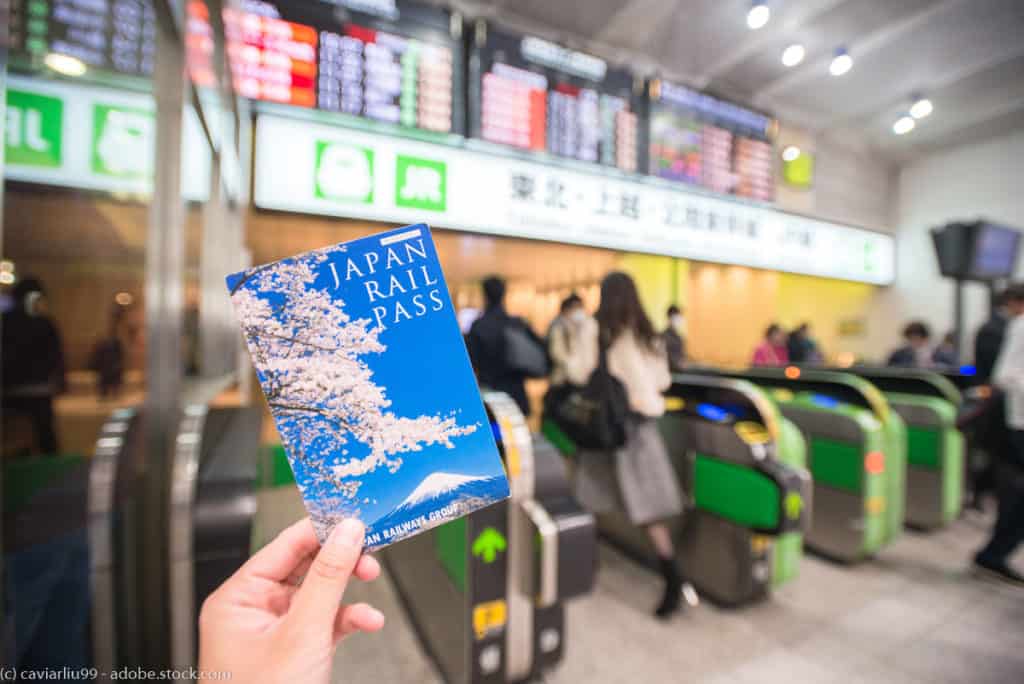

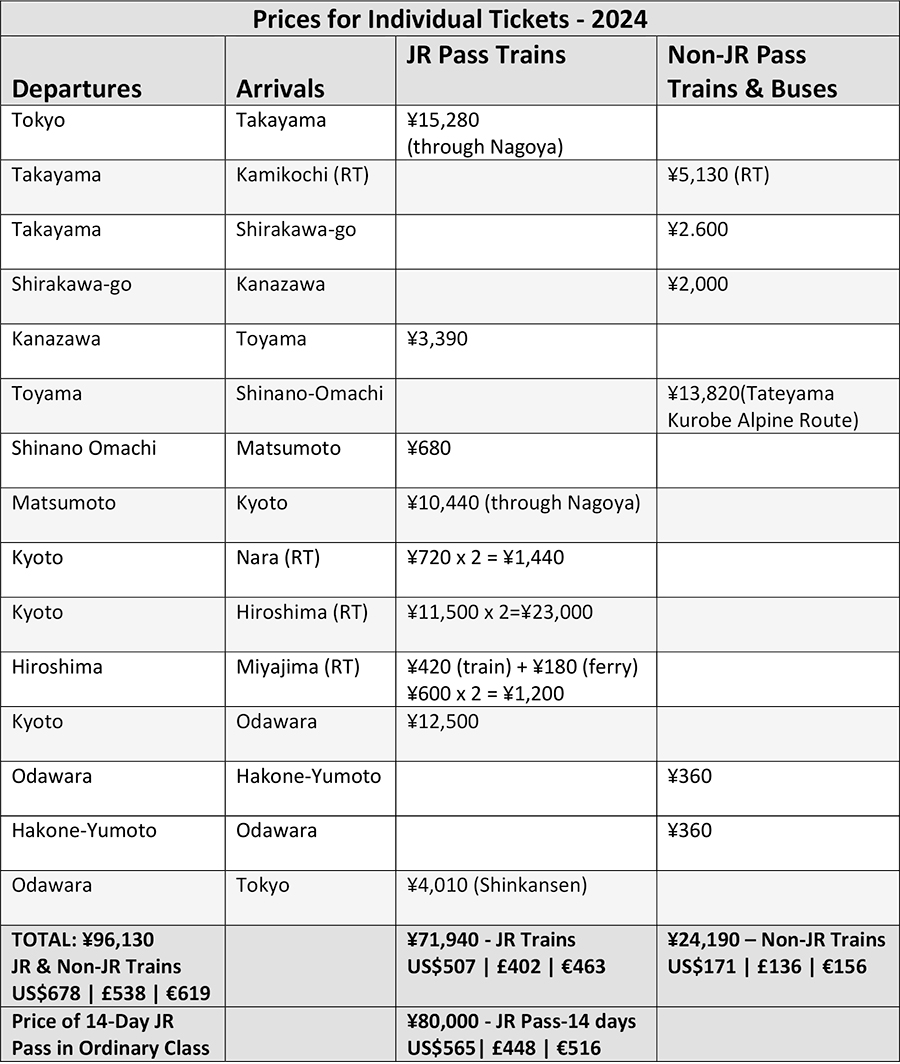
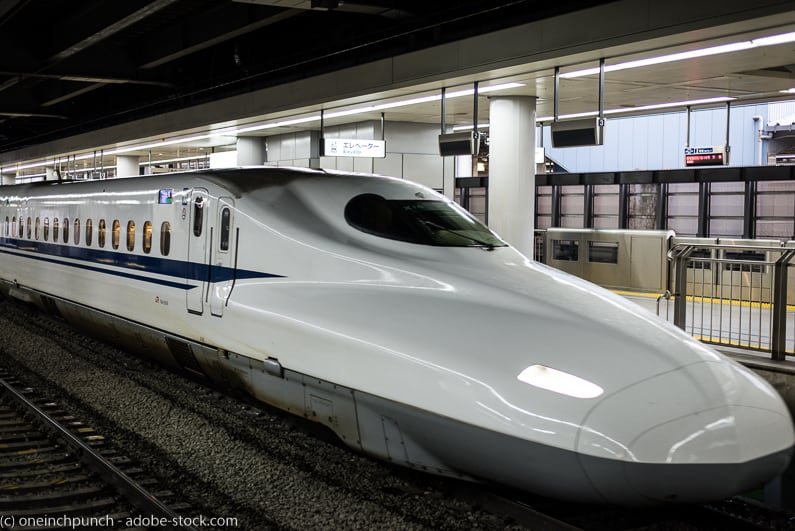


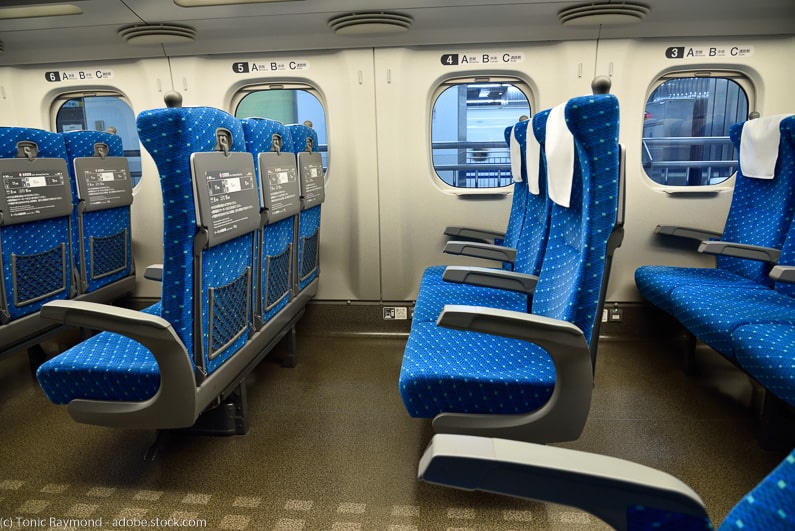




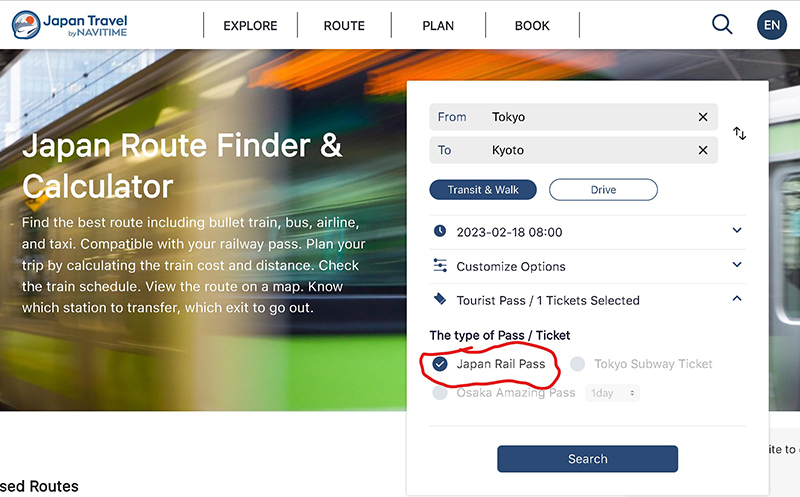



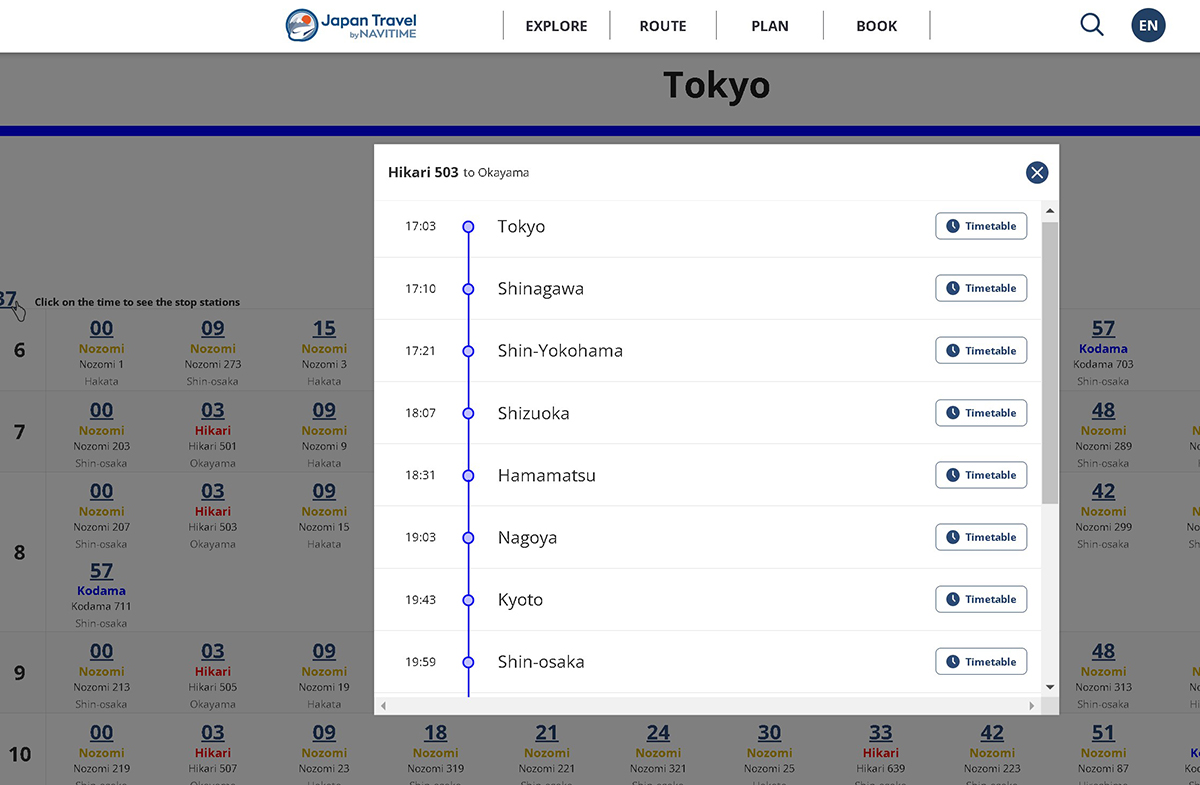







I didn’t even consider a rail pass in Japan, but it makes so much sense! I’ll definitely be coming back to this post when I get the chance to visit.
I hope you have a chance to visit Japan some day!
Such a comprehensive guide about the JR Pass! Last year I traveled in Japan for 1 month and I only bought the JP pass for 7 days. I did the same as you, calculating my itinerary and comparing the prices and it was not always useful. Especially when you stay a few days in each. cities!
Wow! One month–that’s great! It’s important to use Hyperdia to see if the JR Pass is worth it even if you’re not definite on your itinerary.
Definitely saving this info for future travels!
I hope you have a chance to travel to Japan some day!
A comprehensive guide about the JR pass, made it clear how and when to use it. Will safe it for when we get to Japan.
Thank you! I hope you have the opportunity to go to Japan some day!
Wow im so impressed, this guide is so indepth! well done!
Thank you!
This is a really useful and detailed guide. I spent so long reading up on Japan Rail Passes and getting confused before I went to Japan. I wish I had this guide then.Saving this to use next time I can go there!
Thank you! I agree. When I was planning too, I thought it was confusing.
Japan is on my bucket list and this info is so useful. Have saved for future travels.
Thank you! I hope you have a chance to get to Japan some day!
The freedom it gives to travel with a rail pass will still make it worth it in my opinion. It was a bit “scary” when first starting, but guides like this really makes it easier. Thanks for sharing!
Thanks, Patrick! Yes, I agree. At first the pass is a bit intimidating. There are lots of rules about when and where to buy it and how to use it that it can be overwhelming. But once you start using it and getting a hang of it, it’s so fun and free!